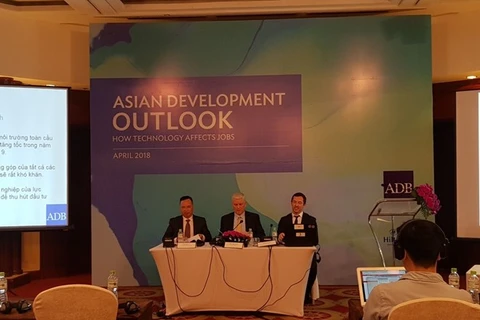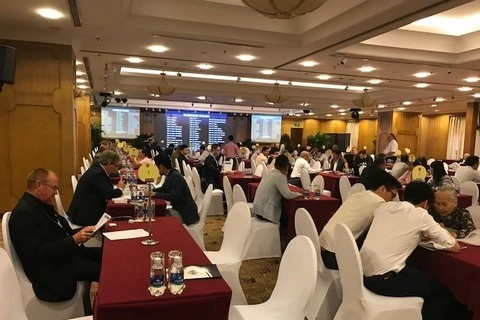Hanoi (VNA) - Joint winner of the 2004 Nobel prize in Economics, Prof. Finn Kydland, spoke to Viet Nam News about the Vietnamese economy and growth on the sidelines of the 2018 Recontres du Vietnam – a development initiative that has brought world-renowned scientists to Vietnam for discussions since 1993.
Q: What are your impressions of Vietnam’s economic growth in recent years?
A: About two years ago I read on Viet Nam News (I think) about the willingness of the Vietnamese Government to let foreign companies set up shop in Vietnam, which I think is a good idea in developing economies. In the initial stages, typically an economy doesn’t have all the skills needed for growth to get momentum. It’s a good way to be willing or receptive to let foreigners become entrepreneurs in a country like Vietnam and they can help get growth going and Vietnamese can learn from them.
Q: What is your view on large State owned enterprises (SoEs) in economic development?
A: It’s an extremely bad idea. You’ll see that in China, for example. I think China, with the same use of resources, could have grown substantially faster than it has done and that is in part because of the lack of development in the financial and banking sectors. State-owned banks tend to favour the big State-owned companies and I don’t think bureaucrats are the ones who know which are the best or most promising projects. I don’t think they have the expertise or the incentives to identify the best projects. A market economy potentially works much better because of the market incentives to learn how to identify such projects.
Q: Vietnam, not unlike many other countries, relies on GDP as a single all-powerful indicator of growth. What is your view on this approach to measure growth?
A: Typically, there are two basic components: consumption expenditures and investment expenditures. In developing countries, investment expenditures are very important. For example, if a bigger chunk of GDP was consumption then it’s not a good thing for developing economies. Successful developing economies have been willing to forgo consumption, not completely but reduce it below what we call a steady state, and instead devote more of their GDP to investment which allows them to grow faster. In return for giving up consumption today, you’ll get to enjoy more in the future than you otherwise would have.
Q: One of the limiting factors of GDP as an indicator of growth is that it often fails to calculate the damage done by economic development to the environment. What is your view on this aspect of GDP?
A: This is a very important point and something I have become more and more interested in because I was on a panel to evaluate solutions to climate change, organised by the Copenhagen Consensus. I was a part of a conference in May last year on climate change problems which aimed at breaking down the barriers between macro and micro economics. We try to bring people who are experts in more micro orientations and some in macro. We are also trying to bring together people with micro aspects and those who work on national or global aspects of climate change.
Q: Rising public debt has been a hotly debated topic in Vietnam in recent years. What are your recommendations for policy makers to manage this particular issue?
A: I would need to have access to the figures (for specific recommendations) but it is quite common for a country that is at the early stages of development to accumulate debt, especially when they have the credibility to borrow from abroad so that they can grow faster by channelling that borrowing in investment. That’s the way all successful countries started at the low level, including my home country Norway. Norway used to be a poor country in the early 1900s. For a while, maybe 50 years, they relied, to some extent, on borrowing from the rest of the world. They used their borrowing to increase their capacity in producing and investment primarily and they made Norway a much more developed country and they managed to pay it back. Now, if you are saying that the debt to GDP ratio of Vietnam is getting out of hand because it has been mostly channelled into consumption then I would say that’s a bad idea.-VNA
VNA

























